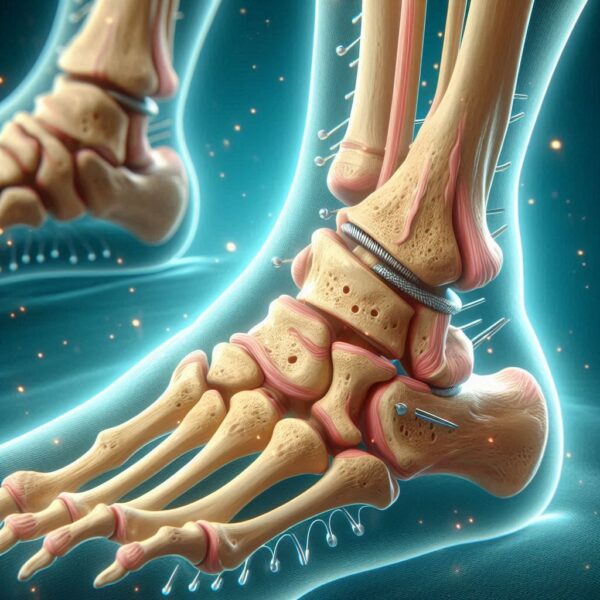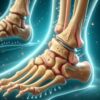

From: 100.00$
The Iran Health Clinic is a reputable medical center that specializes in providing advanced fat transfer treatment to its patients. With a team of experienced doctors who have been trained in the latest fat transfer techniques, the clinic is committed to delivering high-quality care that is tailored to meet the unique needs of each patient.
Using state-of-the-art technology and equipment, the clinic can perform fat transfer procedures that are safe, effective, and minimally invasive. Whether you are looking to restore volume to your face, increase the size of your breasts, or enhance your buttocks, the Iran Health Clinic can help you achieve your desired results.
With a warm and welcoming environment, the clinic strives to make every patient feel comfortable and relaxed throughout their entire treatment process. If you are looking for a trusted medical center for your fat transfer needs, then the Iran Health Clinic is the right choice for you.
Bone fusion surgery, also known as arthrodesis, is a procedure that aims to permanently join two or more bones in the body. This surgical intervention is commonly performed in various areas, including the spine, ankle, and hindfoot, to address conditions such as severe arthritis, instability, or deformity. The fusion process involves the gradual growth of bone tissue between the adjacent bones, ultimately creating a solid and stable connection.
The specific procedure for bone fusion surgery varies depending on the location and the underlying condition being addressed. In spinal fusion surgery, for example, the surgeon may use bone grafts or substitutes to facilitate bone growth between the adjacent vertebrae, eventually forming a single bone. In other areas such as the ankle or hindfoot, the surgeon may use screws, plates, or bone grafts to hold the bones in the correct position, promoting the fusion process.
Bone fusion surgery is suitable for individuals with conditions such as severe arthritis, instability, or deformity that have not responded to non-surgical treatments. It is recommended for those experiencing chronic pain, limited mobility, and a decreased quality of life due to bone-related issues.
Bone fusion surgery may not be suitable for individuals with certain medical conditions that increase the risks associated with surgery. Additionally, those with less severe bone-related issues that can be effectively managed through non-surgical treatments may not be suitable candidates for this procedure.
The advantages of bone fusion surgery include the potential for pain relief, improved stability, correction of deformity, and enhanced joint function. By addressing severe bone-related issues, the surgery aims to enhance mobility and overall quality of life for suitable candidates.
Complications associated with bone fusion surgery may include the risk of infection, delayed healing, nerve damage, and the potential need for repeat surgery in cases of nonunion. Additionally, the change in biomechanics after fusion surgery may increase stress on adjacent bones or joints, potentially leading to degenerative changes in those areas.
Preoperative care for bone fusion surgery involves thorough patient evaluation and planning, taking into account all relative and absolute contraindications. Preoperative rehabilitation, including strength and movement improvement in the affected area, is recommended to optimize postoperative recovery and decrease the risk of postoperative stiffness.
Postoperative care for bone fusion surgery focuses on monitoring the patient’s physiological health and aiding in postsurgical recovery. This phase may involve rehabilitation, immobilization of the affected area, and a gradual return to weight-bearing activities after a specified period. Close adherence to postsurgical care instructions is crucial for successful recovery and long-term stability.
Only logged in customers who have purchased this product may leave a review.
Bone fusion surgery, also known as arthrodesis, is a procedure that aims to permanently join two or more bones in the body. This surgical intervention is commonly performed in various areas, including the spine, ankle, and hindfoot, to address conditions such as severe arthritis, instability, or deformity. The fusion process involves the gradual growth of bone tissue between the adjacent bones, ultimately creating a solid and stable connection.
The specific procedure for bone fusion surgery varies depending on the location and the underlying condition being addressed. In spinal fusion surgery, for example, the surgeon may use bone grafts or substitutes to facilitate bone growth between the adjacent vertebrae, eventually forming a single bone. In other areas such as the ankle or hindfoot, the surgeon may use screws, plates, or bone grafts to hold the bones in the correct position, promoting the fusion process.
Bone fusion surgery is suitable for individuals with conditions such as severe arthritis, instability, or deformity that have not responded to non-surgical treatments. It is recommended for those experiencing chronic pain, limited mobility, and a decreased quality of life due to bone-related issues.
Bone fusion surgery may not be suitable for individuals with certain medical conditions that increase the risks associated with surgery. Additionally, those with less severe bone-related issues that can be effectively managed through non-surgical treatments may not be suitable candidates for this procedure.
The advantages of bone fusion surgery include the potential for pain relief, improved stability, correction of deformity, and enhanced joint function. By addressing severe bone-related issues, the surgery aims to enhance mobility and overall quality of life for suitable candidates.
Complications associated with bone fusion surgery may include the risk of infection, delayed healing, nerve damage, and the potential need for repeat surgery in cases of nonunion. Additionally, the change in biomechanics after fusion surgery may increase stress on adjacent bones or joints, potentially leading to degenerative changes in those areas.
Preoperative care for bone fusion surgery involves thorough patient evaluation and planning, taking into account all relative and absolute contraindications. Preoperative rehabilitation, including strength and movement improvement in the affected area, is recommended to optimize postoperative recovery and decrease the risk of postoperative stiffness.
Postoperative care for bone fusion surgery focuses on monitoring the patient’s physiological health and aiding in postsurgical recovery. This phase may involve rehabilitation, immobilization of the affected area, and a gradual return to weight-bearing activities after a specified period. Close adherence to postsurgical care instructions is crucial for successful recovery and long-term stability.
There are no reviews yet.
Only logged in customers who have purchased this product may leave a review.
Choosing the right hospital and physician are important factors to consider that significantly influence a patient’s treatment. The preferred choice for many patients is choosing private care.
Choosing the right hospital and physician are important factors to consider that significantly influence a patient’s treatment.
Reviews
There are no reviews yet.